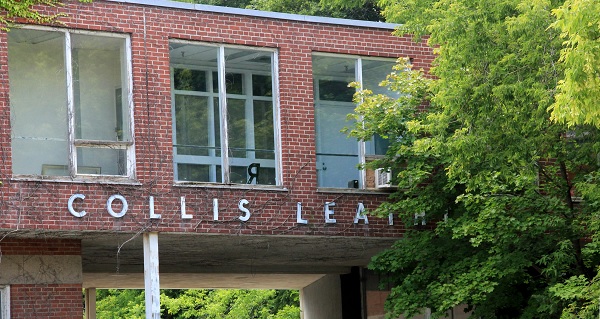Archive
Collis Leather demolition to be decided amid environmental worries
September 17, 2014 · 0 Comments

By Brock Weir
The fate of redevelopment of the former Collis Leather factory will ultimately be in Council’s hands next week as Aurora’s Heritage Advisory Committee (HAC) refused to give the building’s pending demolition its blessing.
Neighbouring residents on Tyler Street, and environmentalists from further afield, have been closely watching progress on the former tannery, concerned that any work on the site would disturb contaminants in the soil stemming from leather production decades ago, running the risk of it getting into the surrounding area and creek.
While this has long been a concern, an extra urgency was added last year when Maple Leaf Foods sold the site to developers, who propose to knock down the building and build a small-scale development of townhouses.
“I love old buildings and I have a century home myself [but] more than I love old buildings, I think I love the environment,” said Tyler Street resident Pat Sinclair, addressing Monday’s HAC meeting. “Cleaning up the whole area is just so, so important. It has been sitting there polluted for so long. I don’t know the building, I don’t know the issues on whether you could save the building and clean up the environment, but number one on my list would be the environment above the historical value.”
On hand to address some of these concerns was Joanne Barnett, Vice-President of Charlieville Developments, a division of Kerbel Group. According to Ms. Barnett, the Collis building serves “no useful purpose” to the community and “will never serve a useful purpose again” as it stands now. Before the land was sold by Maple Leaf last year, a full environmental analysis was undertaken to see how it could be remediated “in the public interest.”
“The approach was that there were certain isolated areas of contamination where remediation had to occur,” she said. “It is not significant; about 3,000 cubic metres of material have to be removed from the site in accordance with [provincial regulations]. Those areas have been isolated by the consultant with Maple Leaf Mills and the areas are known, test bits have been dug, sampling has occurred. The water course has been sampled, the water course is salvageable, the site can be remediated and risk assessed and can become useful again, and it can become environmentally sound again.
“The issue revolves around how one remediates the site. Without the demolition of the building, the site cannot be remediated. There is a considerable investment in remediating the natural aspects of this site that we are prepared to do.”
While Ms. Barnett’s group has successfully tackled a number of remediation projects, this one is unique for them in that this is a brownfield which also happens to be listed for heritage.
“If this site remains listed and we don’t get the demolition permit, then we won’t be able to invest in the cleanup and the status will stay quo and we will consider what our options are. Working together with the Town we can do better than what is there today, but it doesn’t involve doing something with this building that is not doable. It is just not possible.”
If Council ultimately approves their demolition application, all contaminated materials will be removed from the site with clean fill brought in to “cap” the site. On top of the new clean fill will be a slab at grade townhouse development where rather than traditional houses with basements and deeper foundations, homes will be built on newly poured slabs so as not to “disturb” anything underneath. This is also necessary for the area since the land itself is so low, added Ms. Barnett.
In considering the application, HAC members weighed the considerations put forth by Ms. Sinclair in finding the right balance between environmental and heritage concerns. Ultimately, after a lengthy discussion, they decided their mandate is to speak strictly to heritage matters and leave environmental issues to others. The Collis Leather Building scored 52.5 in a heritage evaluation completed after a site visit earlier that day. From that end, they felt obligated to “encourage” the retention of that building, despite some misgivings over York Regional Police using the building to train officers on forcible entry, leaving it in a further state of disrepair.
“We’re not dealing with a building sitting on some land that may potentially have a couple of barrels on it,” said committee member David Heard of the contamination. “I think we’re dealing with a land that operated in the community for a long, long time with a lot of questions and a lot of concerns. The documentation is quite substantial [and] I think we need to know what we’re dealing with.”
Historian Jacqueline Stuart said she had mixed views on the application. On the one hand, she disagreed with the suggestion the buildings have no cultural or heritage value, considering their architecture, but on the other hand she saw “no practical future for the building.”
“Sometimes I think we try to look back too far for interest,” she said. “I think the Collis Leather building has, perhaps, some of the very best examples of late 1940s and 1950s industrial architecture in Aurora.”
Councillor John Abel, on the other hand, made his feelings quite clear.
“I think it should be delisted,” he said. “Let the neighbours get that blight off their street. It is a contaminated site. I can only see good things coming by developing it. If I was a homeowner there and you said you were going to clean this up and put some residential units there to complement the street, I would say, ‘great!’”











